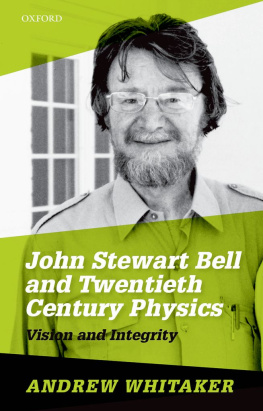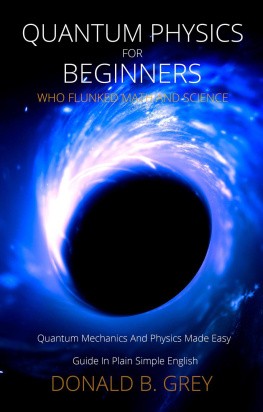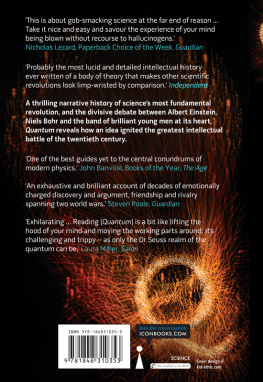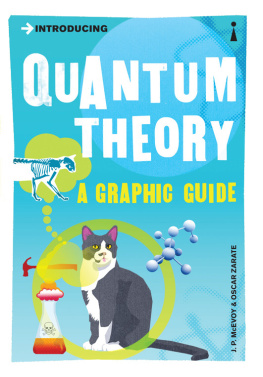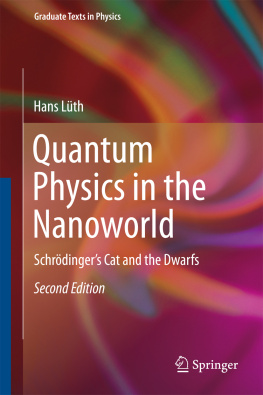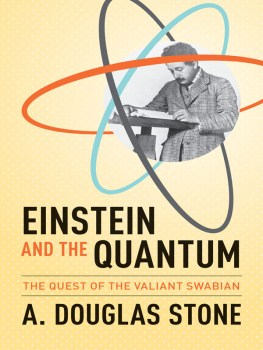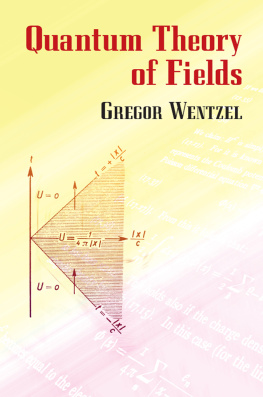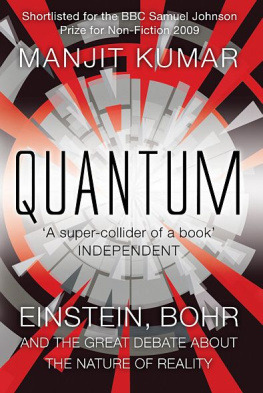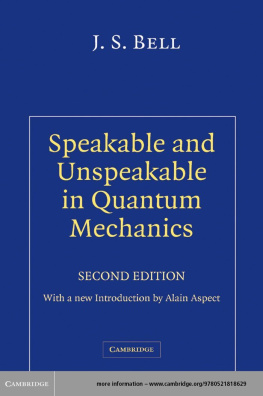JOHN STEWART BELL AND TWENTIETH-CENTURY PHYSICS
JOHN STEWART BELL AND TWENTIETHCENTURY PHYSICS
Vision and Integrity
Andrew Whitaker
Department of Physics, Queens University Belfast, Northern Ireland


Great Clarendon Street, Oxford, OX2 6DP, United Kingdom Oxford University Press is a department of the University of Oxford. It furthers the Universitys objective of excellence in research, scholarship, and education by publishing worldwide. Oxford is a registered trade mark of Oxford University Press in the UK and in certain other countries
Andrew Whitaker 2016
The moral rights of the author have been asserted
First Edition published in 2016
Impression: 1
All rights reserved. No part of this publication may be reproduced, stored in a retrieval system, or transmitted, in any form or by any means, without the prior permission in writing of Oxford University Press, or as expressly permitted by law, by licence or under terms agreed with the appropriate reprographics rights organization. Enquiries concerning reproduction outside the scope of the above should be sent to the Rights Department, Oxford University Press, at the address above
You must not circulate this work in any other form and you must impose this same condition on any acquirer
Published in the United States of America by Oxford University Press
198 Madison Avenue, New York, NY 10016, United States of America
British Library Cataloguing in Publication Data
Data available
Library of Congress Control Number: 2015956498
ISBN 9780198742999
eISBN 9780191060700
Oxford University Press makes no representation, express or implied, that the drug dosages in this book are correct. Readers must therefore always check the product information and clinical procedures with the most up-to-date published product information and data sheets provided by the manufacturers and the most recent codes of conduct and safety regulations. The authors and the publishers do not accept responsibility or legal liability for any errors in the text or for the misuse or misapplication of material in this work. Except where otherwise stated, drug dosages and recommendations are for the non-pregnant adult who is not breast-feeding
Links to third party websites are provided by Oxford in good faith and for information only. Oxford disclaims any responsibility for the materials contained in any third party website referenced in this work.
to Mary Bell
Preface
A quarter of a century after his death, and half a century after his most important work, it is becoming clear to most commentators, although still perhaps not to all, that John Stewart Bell was one of the very most important physicists of the twentieth century.
While he performed extremely valuable work on particle accelerators and in nuclear and elementary particle physics, it is clear that his special claim to fame rests with his work on the foundations of quantum theory, and there are two distinct aspects to this.
The first is the important Bells theorem, or Bells inequality, a result that startled the scientific community not only by demonstrating a clear distinction between the predictions of quantum theory and the demands of local causality, but also by showing that experimental tests could be performed to decide between the two.
Such experiments have indeed been carried out over the last 45 years with ever-increasing scientific sophistication or, in other words, with a reduction in the number and significance of loopholes, and it is confidently expected that an entirely loophole-free test will be possible in the next year or so. It is all but definite that the verdict will be in favour of quantum theory.
The second aspect, though, is perhaps even more significant. It is that, through his example and his achievements, discussion of fundamental aspects of quantum theory, which had been considered practically the mark of a crank in the years when Niels Bohr and his Copenhagen philosophy held physicists in a pincer-like grip, is now a respected and highly valued field of study, opening up for investigation novel and wide-ranging conjectures about the physical universe.
Study of fundamental concepts has opened up the highly practical topic of quantum information theory, which has already made considerable progress, but is certain to develop in future decades so as to revolutionize information technology.
By the 1960s, quantum mechanics was already the most successful physical theory ever in terms of explaining the behaviour of atoms, molecules, nuclei, solids, and so on, as well as being hugely significant commercially in, for example, the invention of the transistor and the laser. If the achievement of taking such an important field of study and developing it in completely unforeseen directions, adding enormous depth and breadth of understanding and unveiling entire new and fascinating areas of investigation, is to be considered great science, then there are quite reasonable grounds for declaring Bell to be a great scientist.
This book provides a full account of the development of Bells life and career from its rather humble (if not necessarily poor) origins, through the difficulties in obtaining finance for his secondary school and university studies, and onto his enormous achievements at Harwell and then at CERN. However, its main emphasis is on his work, not only on quantum theory but also on what he was actually paid forthe study of accelerators, nuclear physics, and the physics of elementary particles; Bell himself felt that these components of his work were rather neglected. The presentation is non-mathematical, and every effort has been made to provide a thorough but comprehensible account of all areas of his work.
The story is presented decade by decade, so the reader meets quantum theory and its difficulties as Bell himself met them, first at Queens University Belfast in the 1940s, and then at Harwell in the 1950s. The quantum background is presented quite fully, although in a broadly non-technical fashion and, as successive chapters study the work and ideas of a particular decade, one may appreciate the development of Bells ideas.
With ideas of such depth, it is not surprising that argument about the precise logical requirements and meaning of the all-important Bells theorem continues. Indeed, as explained in , differences of opinion appear to have surfaced more obviously in connection with 50th anniversary celebrations. It is not felt that this book is the place for detailed conceptual analysis. Rather, some aspects of the discussion are mentioned, and relevant references given for those wishing to follow them further, but the central approach has been to present the ideas of Bell himself and others, in some cases with rather different views, broadly in their own words. Of course, it might be suggested that Bells words should be given particular weight!
When Bell entered the accelerator field at the end of the 1940s, the field was new enough that it has been possible here to present a fairly full account of the developments up to that time, and so to set the discovery of strong focussing, in which Bell played a substantial role, in context. Of course, there had been a major widening of the field by the time he returned to the area in the 1980s, but a substantial account of his later work has also been given.
Elementary particle physics is, of course, a much wider subject. A general account of progress in the 1960s and 1970s has been included in order to enable the discussion of some of Bells most important work in the area, on CPT and gauge theory, to be understood. The equally important discovery of the AdlerBellJackiw (or ABJ) anomaly is also described, although it must be admitted that this is a challenging topic for anybody, however knowledgeable, to appreciate fully!

